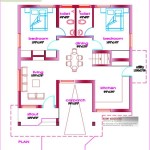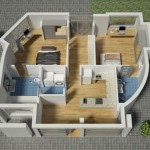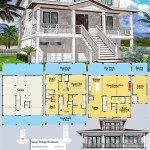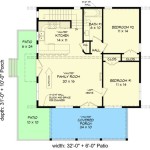Design a Floor Plan for a House
Planning the layout of a house is a crucial step in the design process. A well-designed floor plan ensures optimal functionality, flow, and aesthetics. Here's a comprehensive guide to designing a floor plan for a house:
1. Determine Space Requirements:
Begin by defining the number of rooms, their size, and the purpose of each space. Consider the needs of the occupants, their lifestyle, and future plans. Determine the square footage required for each room and the overall square footage of the house.
2. Establish a Central Focal Point:
Identify a central point that will serve as the anchor of the house. This could be a grand staircase, a fireplace, or a stunning view. The focal point should be visible from multiple areas and create a sense of symmetry and balance.
3. Plan the Entry:
The entryway sets the tone for the house. Design a welcoming and functional entrance with ample space for guests and storage for coats and shoes. Consider incorporating a mudroom or foyer to transition from the outdoors to the interior.
4. Create Flow and Circulation:
The floor plan should encourage seamless flow between rooms. Avoid creating dead ends or bottlenecks. Plan hallways and corridors that connect the spaces without feeling cramped or obstructive.
5. Zone Living Spaces:
Divide the floor plan into different zones, such as public areas (living room, dining room, kitchen) and private areas (bedrooms, bathrooms). Group related activities together to create functional clusters.
6. Consider Natural Light:
Maximize natural light by placing windows and doors strategically. Allow ample daylight to penetrate living spaces, kitchens, and bathrooms. Orient the house towards the sun's path to minimize the need for artificial lighting.
7. Design Outdoor Spaces:
Integrate outdoor spaces into the floor plan. Plan for patios, decks, or balconies that extend the living areas to the outdoors. Ensure that these spaces are accessible from multiple rooms and provide privacy.
8. Plan for Storage:
Incorporate ample storage solutions throughout the house. Design built-in closets, pantries, and linen closets to keep belongings organized and out of sight. Maximize vertical space with bookshelves and wall-mounted storage.
9. Consider Accessibility:
Design the house to be accessible to all occupants. Provide ramps or elevators for mobility-impaired individuals. Ensure that doors and hallways are wide enough and that bathrooms are equipped with grab bars.
10. Seek Professional Guidance:
Working with an experienced architect or designer is highly recommended. They can help optimize the floor plan, ensure structural integrity, and comply with building codes and regulations.
Conclusion:
Designing a floor plan for a house is an art and a science. By following these guidelines, you can create a functional, aesthetic, and personalized living space that meets your specific needs and enhances your daily life.

House Plans How To Design Your Home Plan

Floor Plans Types Symbols Examples

Small House Design 2024005 Pinoy Eplans Modern Plans Layout

Small House Design Shd 2024007 Pinoy Eplans One Y Bungalow Plans Layout

Creating The Perfect Floor Plan Quarry View Building Group

House Floor Plans Your Best Guide To Home Layout Ideas

28 Modern House Designs Floor Plans And Small Ideas

House Plans How To Design Your Home Plan

Tips For Selecting The Right Floor Plan Your Home Sater Design Collection

Simlpe House Design Floor Plan Template








